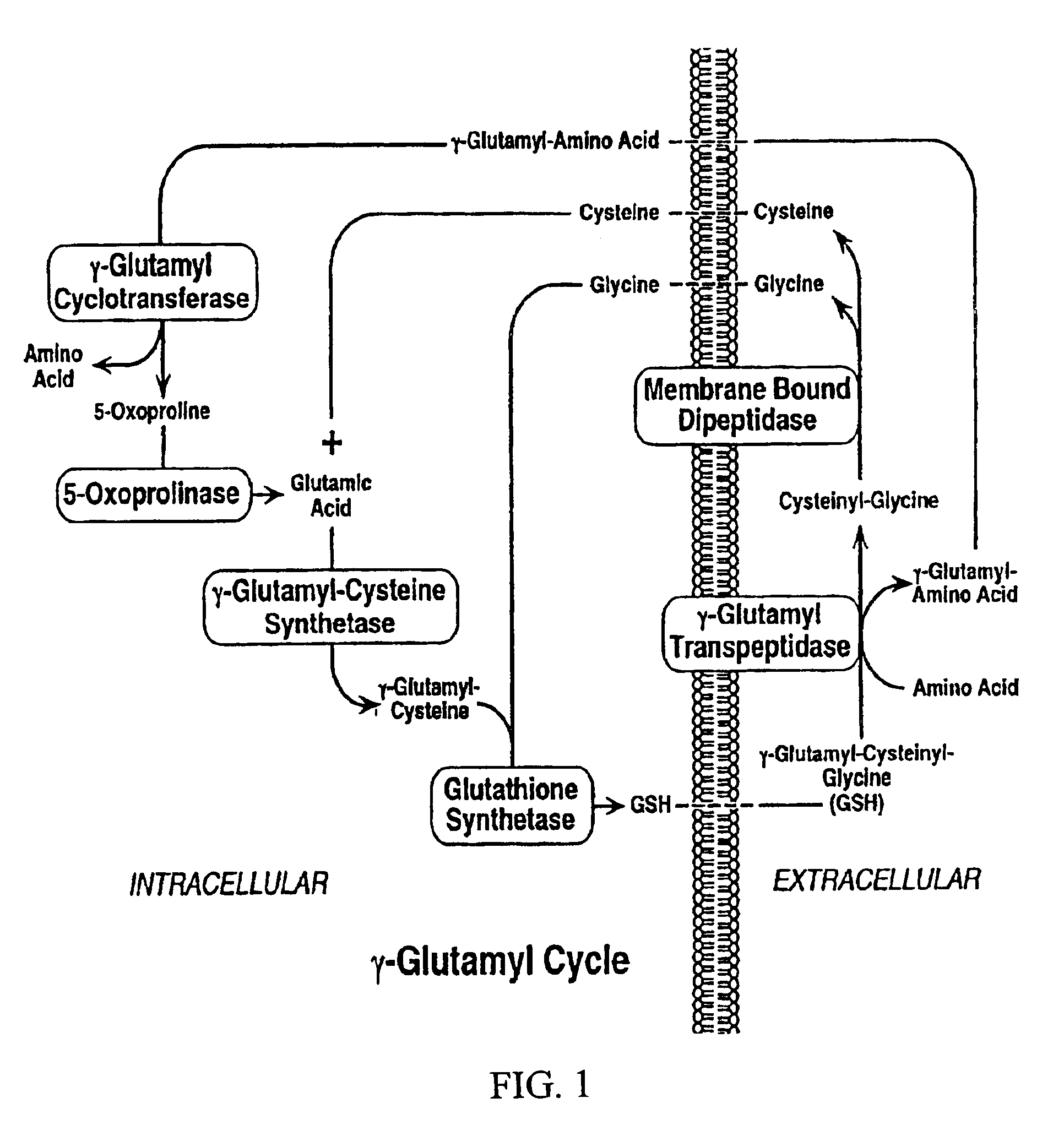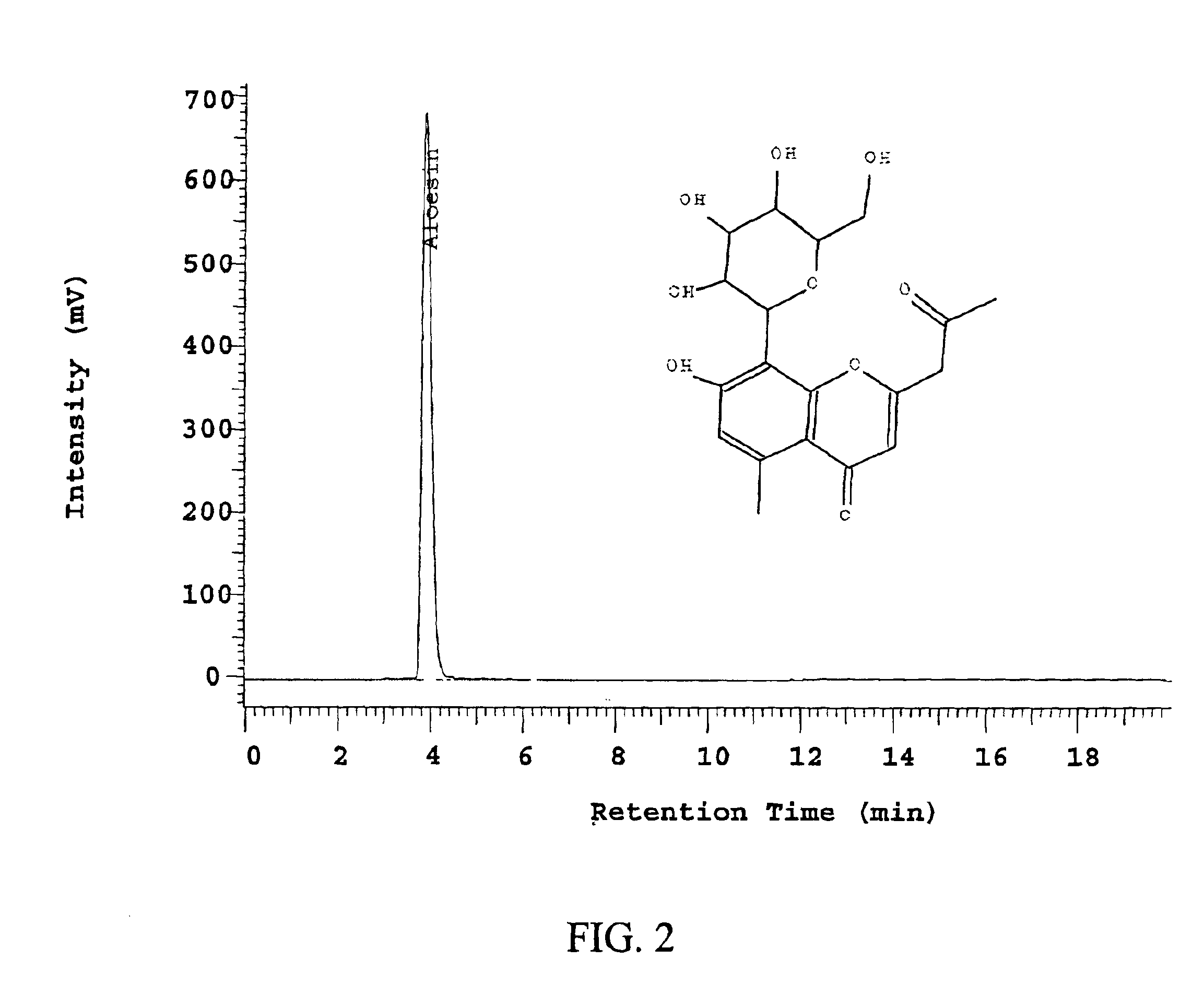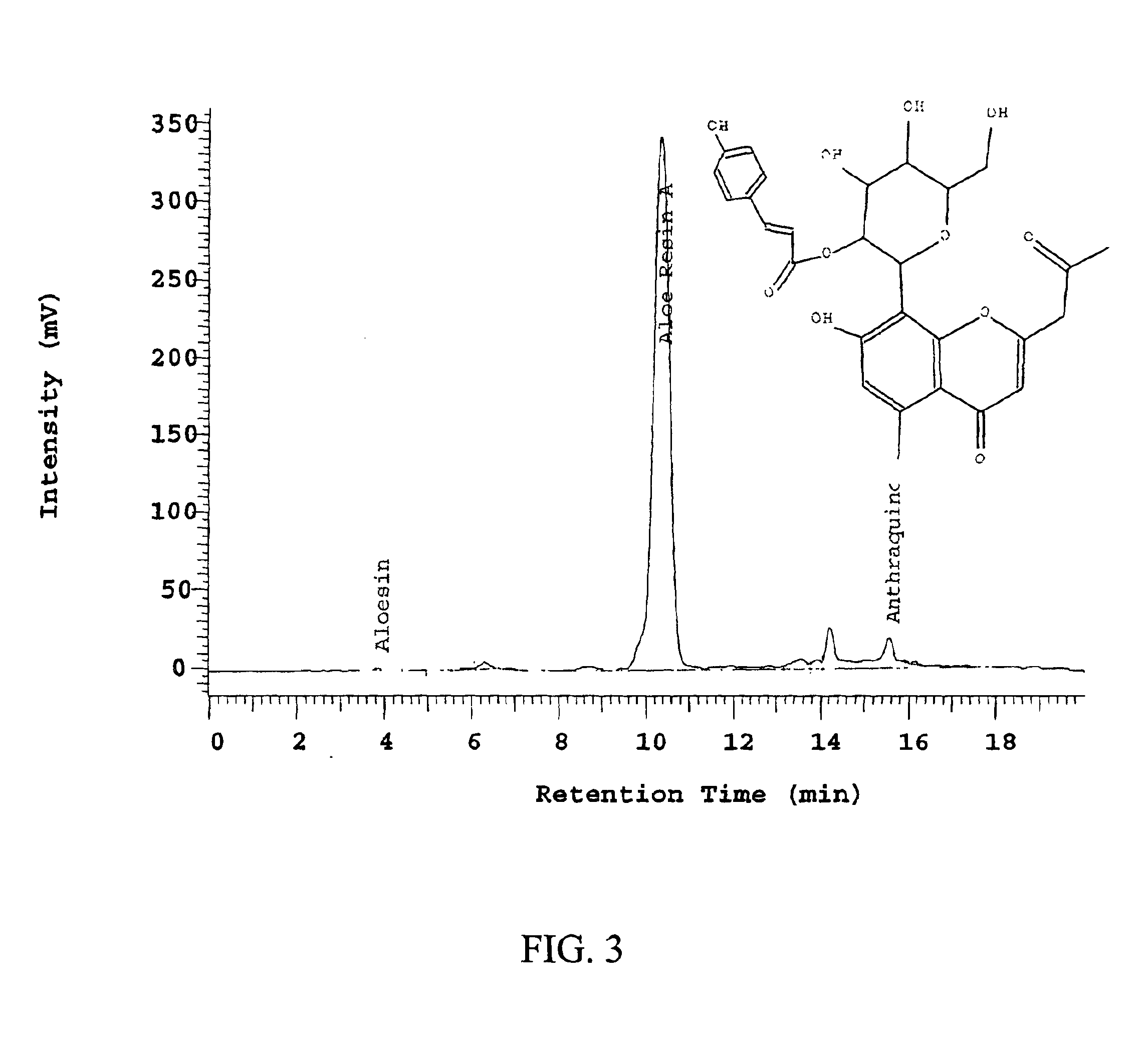7-Hydroxy chromones as potent antioxidants
a technology of chromones and chromones, applied in the field of antioxidants, can solve the problems of cellular damage throughout the body, oxidative damage, and an increasingly global oxidative environment within the human body
- Summary
- Abstract
- Description
- Claims
- Application Information
AI Technical Summary
Benefits of technology
Problems solved by technology
Method used
Image
Examples
example 1
Preparation of Aloesin from the Exudates of Aloe ferox
[0089]A sample of aloesin was prepared using the methods described U.S. patent application Ser. No. 09 / 792,104, filed Feb. 26, 2001, entitled “Method of Purification of Aloesin,” which is incorporated herein by reference in its entirety. Briefly, Aloe extract was isolated from the whole leaf of Aloe ferox that had been previously dissolved in hot water and filtered to remove undissolved particulates. The extract was then loaded onto a reverse phase column and aloesin was eluted from the column with 20-30% methanol.
[0090]Preparative HPLC
[0091]Column: IB SIL C18, 250 mm×4.6 mm, 5μ particle size
[0092]Mobile Phase: water / methanol gradient: 80% / 20% (20 minutes); 40% / 60% (10 minutes); 80% / 20% (10 minutes)
[0093]Temperature: Ambient
[0094]Flow Rate: 1 mL / min
[0095]Detector Wavelength: 297
[0096]Sensitivity: 20
[0097]Product eluted between 8-9 minutes
[0098]The compound was further purified by recrystalization to yield a light yellow solid wi...
example 2
Preparation of Aloeresin A from the Exudates of Aloe ferox
[0099]A mixture of aloe exudates (35 kg) isolated from Aloe ferox, as described in U.S. patent application Ser. No. 09 / 792,104, filed Feb. 26, 2001, entitled “Method of Purification of Aloesin,” which is incorporated herein by reference in its entirety, was added to hot water (200 L at 74° C.) and stirred for 1 hour. The solution was allowed to stand at room temperature for 2 days. The aqueous layer was decanted and the thick liquid residue was extracted again with hot water (200 L at 60° C.). A portion of this secondary extract (20 L) was concentrated and evaporated to dryness.
[0100]Dry extract (1.5 kg), containing 20.1% of aloeresin A, was dissolved in 25 L DI water. This solution was stirred for 30 minutes and loaded directly onto a pre-prepared polyamide column. The pre-prepared column (20 cm×100 cm) contained 20 L of polyamide and was cleaned with aqueous sodium hydroxide and then acidified with aqueous HCl. The column ...
example 3
Purification of Aloeresin A by LH-20 Column Chromatography
[0102]A dry extract (9.6 g), containing approximately 45% of aloeresin A, was dissolved in 250 mL DI water. This solution was loaded directly onto a pre-prepared LH-20 column. The pre-prepared column (6.0 cm×12.0 cm) contained 400 mL of LH-20 resin and was equilibrated with 2 column volumes of DI water. The load material was fed into the top of the column and eluted with 800 mL 30% methanol followed by 600 mL of 100% methanol. The column was then equilibrated with 800 mL DI water and ready to be used again. A total of 38 fractions were collected with 50 mL in each fraction. Fractions 1-14 contained no compounds and were discarded. Fractions 15-30 were combined and evaporated to provide 1.43 g of anthraquinones in total solid of 4.615 g. The Aloeresin A was in fractions 31-36. These fractions were combined and evaporated to yield 4.05 g of Aloeresin A with a purity of 98%. The total solid recovery from the LH-20 column chromat...
PUM
| Property | Measurement | Unit |
|---|---|---|
| concentrations | aaaaa | aaaaa |
| concentration | aaaaa | aaaaa |
| pressure | aaaaa | aaaaa |
Abstract
Description
Claims
Application Information
 Login to View More
Login to View More - R&D
- Intellectual Property
- Life Sciences
- Materials
- Tech Scout
- Unparalleled Data Quality
- Higher Quality Content
- 60% Fewer Hallucinations
Browse by: Latest US Patents, China's latest patents, Technical Efficacy Thesaurus, Application Domain, Technology Topic, Popular Technical Reports.
© 2025 PatSnap. All rights reserved.Legal|Privacy policy|Modern Slavery Act Transparency Statement|Sitemap|About US| Contact US: help@patsnap.com



